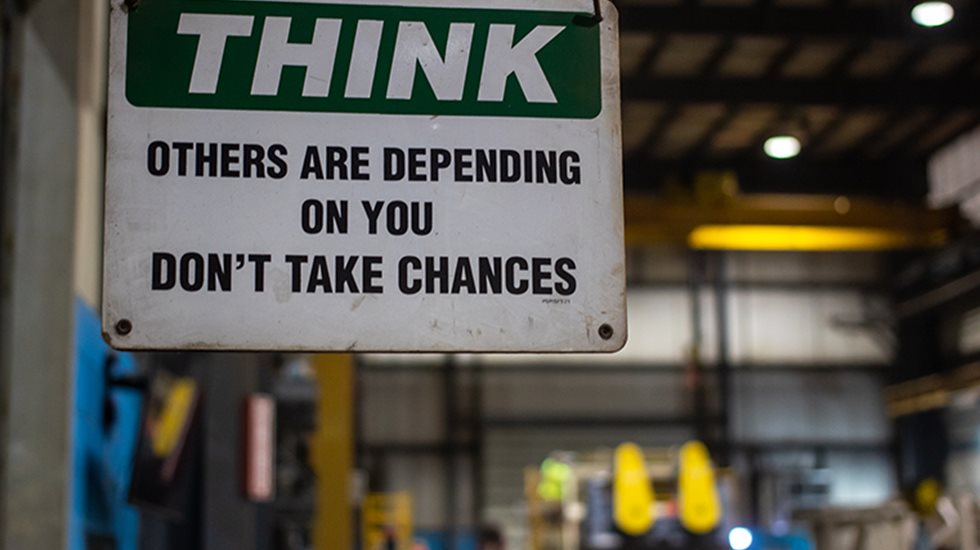Our goal should always be to send people home safely.
Here’s another truth to consider: every injury or incident could have been (or should have been) prevented. This observation isn’t made to place blame; it’s made to increase vigilance. We can prevent incidents if we take the right approach.
To that end, let’s look at six ways to prevent safety incidents. Each of these should be watched for, encouraged, and, as much as possible, enforced.
-
Report unsafe practices or conditions
Safety starts with a mindset: unsafe practices or conditions must be reported for the good of those around us.
There are a few reasons people keep quiet about unsafe activity. One is that many teams are made up of coworkers or buddies, and individuals often don’t want to bring up issues for fear of “ratting out” their friends.
This is understandable, but the reality is that the best thing you can do for a friend is to value their life above your own comfort. It might make you uncomfortable to report an unsafe practice; it might even cause tension. But it also might save a life. Don’t prioritize your own comfort over your friend’s safety.
A second reason that unsafe practices might go unreported is that changing things requires effort. You know how it goes: “We’ve been doing it this way for years and haven’t had issues… Changing it now would be more trouble than it’s worth.” The bottom line is that if it’s unsafe, it’s worth the trouble to change it.
-
Don’t rush work to meet deadlines
On any job site there’s pressure to meet deadlines and quotas. These things exist for a reason, and the desire for productivity is good. But rushing is problematic.
It’s important to emphasize taking the correct approach over taking the quick approach. Strive to emphasize safety training and education before emphasizing the job’s deadlines. Productivity is good, but part of productivity is avoiding incidents.
Focus on doing things right, not on rushing things out.
-
Prioritize education about programs and procedures
In a similar vein, a common safety mistake is to not prioritize education highly enough.
Education is the key to effective safety management. Workers must understand the proper techniques to use on site. This is the only way that unsafe conditions can be recognized. Safety is everyone’s responsibility, so train everybody.
At Mellott Company for example, a Metso distributor in the USA, we facilitate toolbox talks, hold weekly trainings around site-specific tasks, and provide proactive training around new safety features. Our goal is to thoroughly equip our teams to be fully aware of safety practices.
-
Designate a person to analyze hazards
For safety to take priority, a person needs to have responsibility for safety. If nobody is designated to inspect and analyze for potential hazards, issues are far less likely to be reported.
We recommend prioritizing responsibilities based on Prevention through Design’s Hierarchy of Control. The idea is that control tactics at the top of the hierarchy are more effective than those at the bottom. Individuals and teams should be assigned roles accordingly.
-
Regularize crusher maintenance
Regular maintenance isn’t just good safety practice – it’s also a good way to improve productivity.
Machines that aren’t maintained well are far more likely to malfunction and cause harm to people on crushing sites. It’s important to take a preventative maintenance approach; instead of waiting for things to break, there should be inspections at regular intervals (tailored from machine to machine) in order to reduce issues. A next step may be predictive maintenance – maintenance based on data that identifies areas of greatest vulnerability.
In general, the takeaway is this: maintenance keeps people safe.
-
Properly use personal protective equipment (PPE)
Finally, a common crushing site mistake is improperly using personal protective equipment.
This is related to education and it’s critical that personnel know what to wear and how to wear it when they’re on job sites. Consider the value of offering training that emphasizes the importance of correct procedures in this area.
Let’s keep people safe
Safety should always be the most important consideration on a crushing site. Let’s treat it that way. With a proper focus on safety, you can reduce the likelihood that accidents happen on your crushing site.
Let’s keep it safe out there.
About the Author
Our guest blogger, the Mellott Company, is an official Metso Outotec distributor since 2000. Mellott’s journey started in the 1920s as a lumber and coal company, and they have been contributing to the development of the construction industry in the US for 100 years. Today, Mellott provides a full-scope of aggregates solutions ranging from contract crushing and systems engineering to parts sales and service. The company has headquarters and manufacturing campus in Warfordsburg, Pennsylvania, US.
